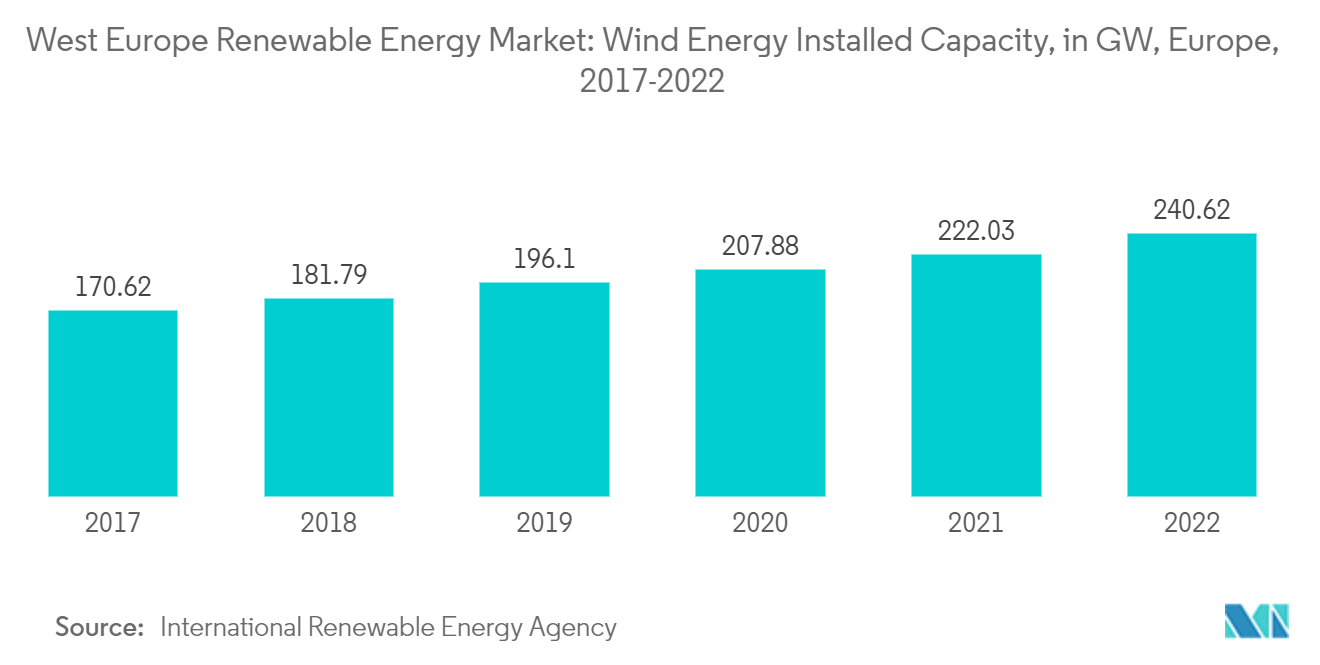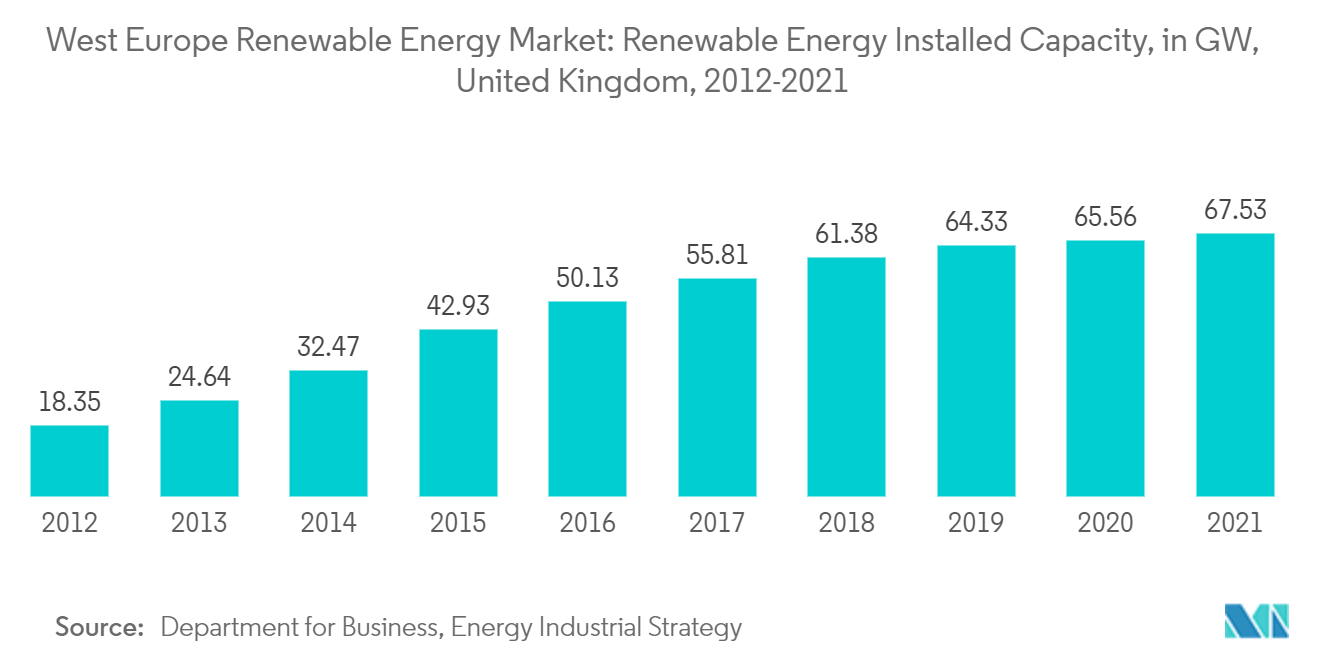Market Trends of West Europe Renewable Energy
Wind Energy to Witness Significant Growth
- As global fossil fuel prices have risen due to rising global demand and the economic fallout of the Russia-Ukraine conflict, most energy investors have been attracted more toward utility-scale renewable energy projects such as wind farms. As of 2022, the European region's total installed wind energy capacity stood at 240.62 GW, up by more than 41% since 2017.
- Additionally, favorable government policies promoting the development of renewables, such as Feed-in Tariff schemes and other financial incentives, have attracted more investors, who view renewable energy investments as safer and more viable long-term investments compared to fossil fuels such as coal and natural gas.
- The economic effects of the Russia-Ukraine war have had a significant impact on Europe, with energy prices skyrocketing throughout the region. To deal with the energy crisis, most European countries, especially in Western Europe, are accelerating the development of renewable energy projects.
- According to the European Wind Energy Association (WindEurope), in 2021, EUR 41 billion was invested for the construction of new wind farms in Europe, financing a record 24.6 GW of new capacity. In addition, there was EUR 15.6 billion of project acquisition activity, with a record 17.3 GW of projects changing hands. Further, this is expected to increase during the forecast period owing to upcoming projects in the region.
- In September 2022, under the Growth Plan, the United Kingdom announced their intention to accelerate planning and development consent processes for projects from the recently completed, currently ongoing, and upcoming (floating) offshore wind leasing rounds to bring new energy capacity online faster.
- The increasing investments in wind power projects have been providing a significant boost to the growth of the wind power sector, thus increasing the demand for renewable energy in Western Europe during the forecast period.

United Kingdom to be the fastest-growing Market
- The United Kingdom is one of the largest renewable energy markets in Europe, and the market is expected to grow steadily during the forecast period. According to the United Kingdom Department for Business, Energy, and Industrial Strategy, as of March 2022, the United Kingdom had approximately 49.44 GW of installed renewable capacity and generated nearly 121.87 TWh of renewable energy capacity, which accounted for nearly 39.1% of the country's total electricity generation. Over the period 2012-2021, the country's installed renewable capacity registered a CAGR of 13.71%, one of the highest globally.
- The country was blessed with high wind energy potential, and wind energy accounted for more than 50% of the total renewable energy generation and installed capacity in 2021. The offshore wind segment is the largest source of renewable energy in the country, generating nearly 35.44 TWh (22.94%) of the country's total renewable energy generation.
- The country also has significant installed solar photovoltaic capacity, accounting for nearly 28% of the total installed renewable energy capacity. However, due to its northern latitudes and relatively lower levels of solar irradiance, solar PV generation accounted for only about 9.8% of the total generation during 2021.
- In April 2022, the British Government launched the British Energy Security Strategy, under which the government plans to produce nearly 95% of electricity by 2030 from low-carbon sources.
- Under this British Energy Security Strategy, the government has set up various renewable energy targets, such as:
- Installation of nearly 50 GW of offshore wind capacity by 2030, of which 5 GW is expected to come from floating offshore wind in deeper seas Additionally, under the strategy, the government plans to reduce the approval time for new offshore wind farms from 4 years to 1 year and streamline the approval process to accelerate construction and reduce environmental impacts.
- Developing partnerships and collaboration with several supportive communities that wish to develop onshore wind infrastructure in their own communities for guaranteed lower energy bills
- Efforts to increase the country's solar PV capacity by reviewing rules for solar projects, especially on domestic and commercial rooftops, The solar capacity is expected to increase from its present value of 14 GW by nearly five times by 2035.
- Plans to double low-carbon hydrogen production capacity to nearly 10 GW by 2030, with at least half of the capacity coming from green hydrogen and utilizing excess offshore wind power to bring down costs
- Due to such large investments and ambitious government targets, the United Kingdom is expected to dominate the West European renewable energy market during the forecast period.


